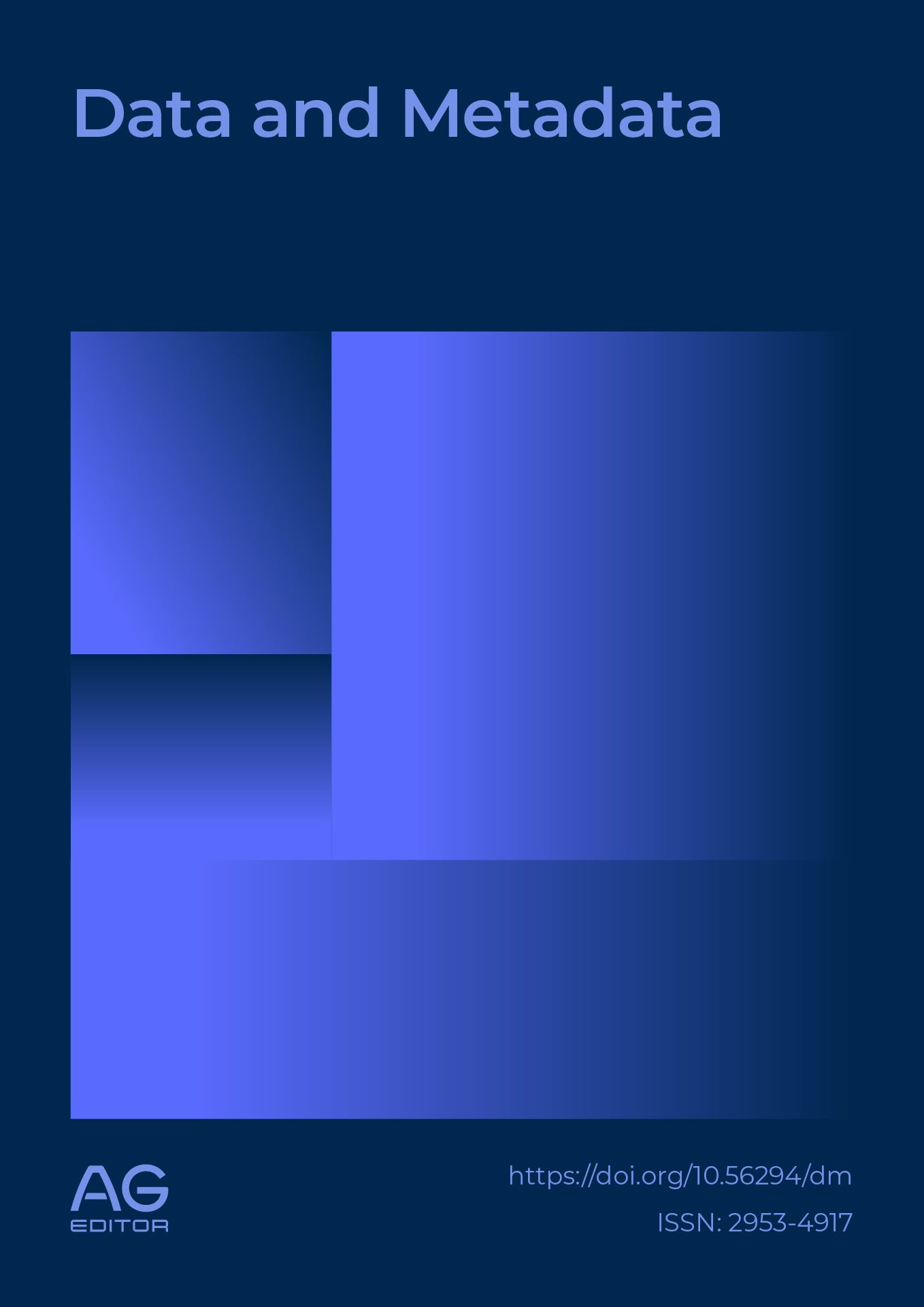Postgraduate degree in Applied Information Technologies, with a major in data analysis and artificial intelligence: a current trend
DOI:
https://doi.org/10.56294/dm2025980Keywords:
Master's program, Information Technologies, Data Analytics, Artificial Intelligence, Higher Education TrendsAbstract
Introduction: The growing need for experts in Information Technology, specifically in Data Analysis and Artificial Intelligence, posed a challenge for educational institutions in Ecuador. This article analyzed the feasibility of offering a master’s program aligned with the demands of the labor market at that time.
Methods: A mixed approach was applied, combining surveys of professionals in the sector with interviews conducted with academics, to evaluate the relevance of the proposed program. The regulatory framework was examined under the Organic Law of Higher Education.
Results: The findings indicated a high demand for specialization in data analysis and artificial intelligence, with notable job placement opportunities. Furthermore, shortcomings were identified in the existing postgraduate program offerings in these fields within the national context.
Conclusions: The creation of a master’s program in this field proved to be both feasible and relevant, aligning with labor market needs and complying with the regulatory requirements of the Ecuadorian educational system.
References
1. Reglamento de Régimen Académico [Internet]. Available from: https://atenea.epn.edu.ec/bitstream/25000/1014/1/REGLAMENTO%20DE%20R%C3%89GIMEN%20ACAD%C3%89MICO.pdf
2. Hernández-Sampieri R, Christian Paulina Mendoza Torres D. Metodología de la investigación: Las rutas cuantitativa , cualitativa y mixta. 2018;
3. Creswell JW, Angeles L. Designing and conducting mixed methods research vickil.
4. Blessing LTM, Chakrabarti A. DRM: A Design Reseach Methodology. DRM, a Design Research Methodology [Internet]. 2009 [cited 2025 Apr 29];13–42. Available from: https://link.springer.com/chapter/10.1007/978-1-84882-587-1_2 DOI: https://doi.org/10.1007/978-1-84882-587-1_2
5. Patton MQuinn, McKegg Kate, Wehipeihana Nan. Developmental evaluation exemplars : principles in practice. 2016;
6. Braun V, Clarke V. Using thematic analysis in psychology. Qual Res Psychol. 2006;3(2):77–101. DOI: https://doi.org/10.1191/1478088706qp063oa
7. Association WM. World Medical Association Declaration of Helsinki: Ethical Principles for Medical Research Involving Human Subjects. JAMA [Internet]. 2013 Nov 27 [cited 2025 Apr 29];310(20):2191–4. Available from: https://jamanetwork.com/journals/jama/fullarticle/1760318 DOI: https://doi.org/10.1001/jama.2013.281053
8. Cantín M. World Medical Association Declaration of Helsinki: Ethical Principles for Medical Research Involving Human subjects. Reviewing the Latest Version. International Journal of Medical and Surgical Sciences [Internet]. 2014 Dec 1 [cited 2025 Apr 29];1(4):339–46. Available from: https://revistas.uautonoma.cl/index.php/ijmss/article/view/216 DOI: https://doi.org/10.32457/ijmss.2014.042
9. Acemoglu D, Restrepo P. Robots and Jobs: Evidence from US Labor Markets. https://doi.org/101086/705716 [Internet]. 2020 Jun 1 [cited 2025 Apr 5];128(6):2188–244. Available from: https://www.journals.uchicago.edu/doi/10.1086/705716
10. El Economista | Periódico especializado en economía, finanzas y negocios [Internet]. [cited 2025 Apr 5]. Available from: https://www.eleconomista.com.mx/capital-humano/inteligencia-artificial-lidero-demanda-habilidades-20241218-738783.htm
11. Universidad Nacional de Chimborazo. Estudio prospectivo de la oferta académica de grado, posgrado, investigación y vinculación de la universidad nacional de Chimborazo al año 2041. 2022.
12. Ecuador 2030 y la Agenda de Desarrollo.
13. Julio. Una mirada a la inteligencia artificial desde los ecuatorianos conectados. 2024 [cited 2025 Apr 29]; Available from: https://www.ipsos.digital/
14. Los trabajos tecnológicos más demandados en Ecuador – ManpowerGroup Ecuador [Internet]. [cited 2025 Apr 5]. Available from: https://www.manpowergroup.ec/los-trabajos-tecnologicos-mas-demandados-en-ecuador/
15. Brynjolfsson E, McAfee A. The second machine age: Work, progress, and prosperity in a time of brilliant technologies. The second machine age: Work, progress, and prosperity in a time of brilliant technologies. New York, NY, US: W W Norton & Co; 2014. 306 p.
16. Davenport T, Guha A, Grewal D, Bressgott T. How artificial intelligence will change the future of marketing. J Acad Mark Sci [Internet]. 2020 Jan 1 [cited 2025 Apr 5];48(1):24–42. Available from: https://link.springer.com/article/10.1007/s11747-019-00696-0 DOI: https://doi.org/10.1007/s11747-019-00696-0
17. Holmes W. Artificial Intelligence in Education. Encyclopedia of Education and Information Technologies [Internet]. 2020 [cited 2025 Apr 5];88–103. Available from: https://link.springer.com/referenceworkentry/10.1007/978-3-030-10576-1_107 DOI: https://doi.org/10.1007/978-3-030-10576-1_107
18. Zawacki-Richter O, Marín VI, Bond M, Gouverneur F. Systematic review of research on artificial intelligence applications in higher education – where are the educators? International Journal of Educational Technology in Higher Education 2019 16:1 [Internet]. 2019 Oct 28 [cited 2025 Apr 5];16(1):1–27. Available from: https://link.springer.com/articles/10.1186/s41239-019-0171-0 DOI: https://doi.org/10.1186/s41239-019-0171-0
19. Bond M, Khosravi H, De Laat M, Bergdahl N, Negrea V, Oxley E, et al. A meta systematic review of artificial intelligence in higher education: a call for increased ethics, collaboration, and rigour. International Journal of Educational Technology in Higher Education [Internet]. 2024 Dec 1 [cited 2025 Apr 5];21(1):1–41. Available from: https://link.springer.com/articles/10.1186/s41239-023-00436-z DOI: https://doi.org/10.1186/s41239-023-00436-z
20. Dwivedi YK, Hughes L, Ismagilova E, Aarts G, Coombs C, Crick T, et al. Artificial Intelligence (AI): Multidisciplinary perspectives on emerging challenges, opportunities, and agenda for research, practice and policy. Int J Inf Manage. 2021 Apr 1;57:101994. DOI: https://doi.org/10.1016/j.ijinfomgt.2019.08.002
21. Russell SJ, Norvig P, Davis E, Edwards DD, Forsyth D, Hay NJ, et al. Artificial intelligence : a modern approach. Pearson [Internet]. 2016 [cited 2025 Apr 5];3:1151. Available from: https://thuvienso.hoasen.edu.vn/handle/123456789/8967
22. University of Oxford [Internet]. [cited 2025 Apr 5]. Available from: https://www.ox.ac.uk/
23. MIT - Massachusetts Institute of Technology [Internet]. [cited 2025 Apr 5]. Available from: https://www.mit.edu/
24. Gilpin LH, BD, YBZ, BA, & SM. Explaining explanations: An overview of interpretability of machine learning. Proceedings of the 2018 CHI Conference on Human Factors in Computing Systems. 2018 IEEE 5th International Conference on data science . 2018; DOI: https://doi.org/10.1109/DSAA.2018.00018
25. Benbya H, Davenport TH, Pachidi S. Artificial Intelligence in Organizations: Current State and Future Opportunities. SSRN Electronic Journal [Internet]. 2020 Dec 3 [cited 2025 Apr 5]; Available from: https://papers.ssrn.com/abstract=3741983 DOI: https://doi.org/10.2139/ssrn.3741983
Downloads
Published
Issue
Section
License
Copyright (c) 2025 Lidia Castro-Cepeda, Fernando Molina-Granja, Ana Elizabeth Congacha, Ximena Quintana-Lopez, Miryan Estela Narváez (Author)

This work is licensed under a Creative Commons Attribution 4.0 International License.
The article is distributed under the Creative Commons Attribution 4.0 License. Unless otherwise stated, associated published material is distributed under the same licence.




